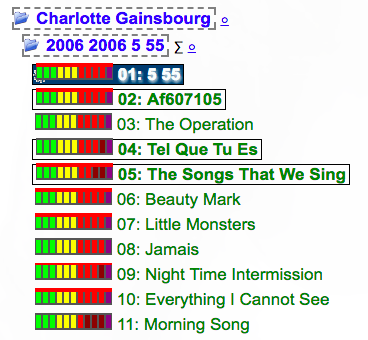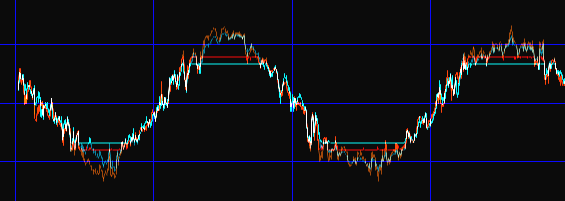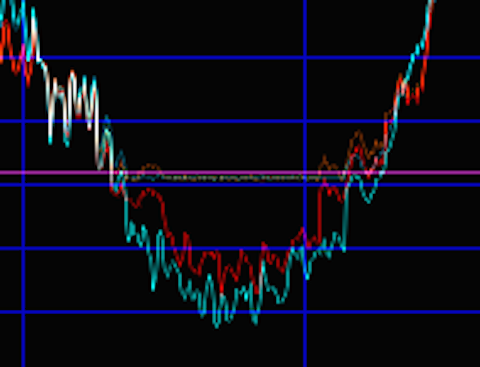De-clipping/decompression
SeeDeClip4 has several unique features specially designed for today's modern digital music. With vinyl and the early CD the studio sound was merely digitized and put onto the CD. Since then however there's been huge progress in making everyone's music sound much louder than everyone elses. To do this the record industry uses a clever mechanism that works like this:

You can see your own copies of this process by examining a track from your music collection with the Audacity program or with SeeDeClip4.
While this process is excellent for making the music much louder, it also has the rather undesirable side effect of removing all the dynamics from the music and rendering HiFi redundant, which is why no one buys it these days.
The only widely available exception to this process is the special 'Mastered For iTunes' releases where Apple has stepped in and demanded a reasonable standard for it's premium customers.
For the listener who is interested in good sound and hasn't re-bought all their digital music in this format SeeDeClip4 offers the first two points below which improve smoothness, listenability and the dynamics of such music.
Declipping your whole library
Every track and the compression and clipping applied is different. If you have a 20,000 song library and 19,000 of those are damaged (typical in modern pop) there will be 19,000 different ways that they are damaged, although tracks within the same album often share the same character of damage. This is because Mastering Engineers are creative people and put a lot of thought and effort into ruining the sound, but the problem they create is that any solution needs to adapt for those differences.
For this reason as time goes on SeedeClip4 is updated to cope with more and more situations. Some tracks will be declipped almost perfectly, others will not and can actually sound worse in some situations. For these tracks the short term solution is often to go to the studio and manually set the thresholds and variances to account for the character of rogue tracks.
An previous example of a track like this was "Free Me" by Joss Stone which is unusual in that the clips were not just noisy and slightly lacking bass response (causing longer clips to sink at the end) but also dance up and down so the algoritm had to be adapted to account for this.
Analysis and quality
Each track is analysed and marked for mastering quality so you can select the best mastered track.
Look at the text colours in the tracklist in the screenshot above for an example (there are 3 different selectable quality indicators).
When you look down the list of songs for an artist; at a glance one can avoid the dodgy remasters and their ruined, clipped waveforms and pick the earlier copies that are generally much higher quality. This makes a big difference to the quality of the sound, SeeDeClip4 will help you find an original, clip free sound if you have it. So SeeDeClip4 gives you two ways to avoid the scourge of clipping, 1) selection and 2) repair.

This information is useful because you can't just assume earlier recording is better and all things are equal, there can be huge variation even in the same album. Grading take account of the amount of compression and clipping and is based on the examination of several thousand different digital tracks through the decades.
Note: this is a measure of mastering quality which like any link in the audio chain influences audio quality. Like those other links however it cannot improve the original recording quality, i.e. it won't fix a dodgy piano.
Declipping
(Note: The Free edition only declips/decompresses the first half of a track)

Decompression
When there is compressed information detected the clips are restored from the low level compression found. A couple of tracks from Sarah Mclachlan's Shine On album are shown below:
Surrender and Certainty

In your Shoes

If you look closely you can see the reconstruction of the limited music data. Needless to say the sound is far better.

The Loudness War has become endemic and ruins the quality and sound of most music tracks these days. Here at cutestudio the damage became so audible and sad that we developed SeeDeClip4 so that each time we listen to any of our music, the damage can be repaired to the best standard we could. Because it's declipped just before we listen, any updates in the declipping technology are then immediately beneficial.
Smoothness and dynamics are enhanced because replacing the sharp clip edges with rounded waveforms reduces the HF contribution from the clip and adds area to the waveform - which must of course be louder. Reduction of the HF harmonic distortion is especially useful because waveforms with a 'squarish' shape tend to be high in odd-order harmonics that sound unpleasant.
|
|
|